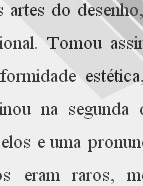

................................
Inácio de Vilhena Barbosa (Lisbon, 1811 - 1890), from a former period, studied theology, but gave up religious life to dedicate himself to journalism. He founded the Universo Pitoresco [Picturesque Universe] (1839-1844), collaborated assiduously in O Panorama [Panorama] and was vice-president of the Academia Real das Ciências [Royal Academy of Sciences]. As an art historian, he devoted himself to the descriptive monography of buildings, as can be seen in Estudos Históricos e Arqueológicos [Historical and Archaeological Studies] (1874 and 1875) and Monumentos de Portugal: Históricos, artísticos e arqueológicos [Monuments of Portugal: Historical, artistic, and archaeological] (1886). It was also in the 19th century that Maximiano de Aragão (Fagil de Mangualde, 1863 - Viseu, 1929), a lawyer and high school teacher in Viseu and a graduate in Law and Theology, began to devote himself to the study of his region, with particular attention to its art and artists, as can be seen in Estudos Históricos Sobre Pintura [Historical Studies on Painting] (1897) and Grão Vasco ou Vasco Fernandes, Pintor Viseense [ Grão Vasco or Vasco Fernandes, a Painter from Viseu](1900). Tomás Lino de Assunção (Lisbon, 1844 - Paço de Arcos, 1902), a public works supervisor for the Instituto Industrial [Industrial Institute], secretary of the Biblioteca Nacional [National Library] and general inspector of libraries and archives, wrote comedies, drama and history, but also bequeathed the Dicionário dos Termos de Arquitectura [Dictionary of Architectural Terms] (1895).
The Coimbra scholars should also be noted. The first was Augusto Filipe Simões (1835-1884), a professor of Medicine and member of parliament, author of a diversified bibliography that made a significant contribution to the knowledge of Roman architecture. Of special note are Relíquias da Arquitectura Romano-Bizantina em Portugal e Particularmente na Cidade de Coimbra [Relics of Roman-Byzantine Architecture in Portugal and particularly in the City of Coimbra] (1870), Da Arquitectura Religiosa em Coimbra Durante a Idade Média [On Religious Architecture in Coimbra during the Middle Ages] (1875) and articles on Grão Vasco, Cistercian architecture and Coimbra sculpture compiled in Escritos Diversos [Miscellaneous Writings] (1888). He thus became the first of a series of names to give consistency to what has been termed the "Coimbra school", in which António Augusto Gonçalves (Coimbra, 1848 - Coimbra, 1932) played an important role.
